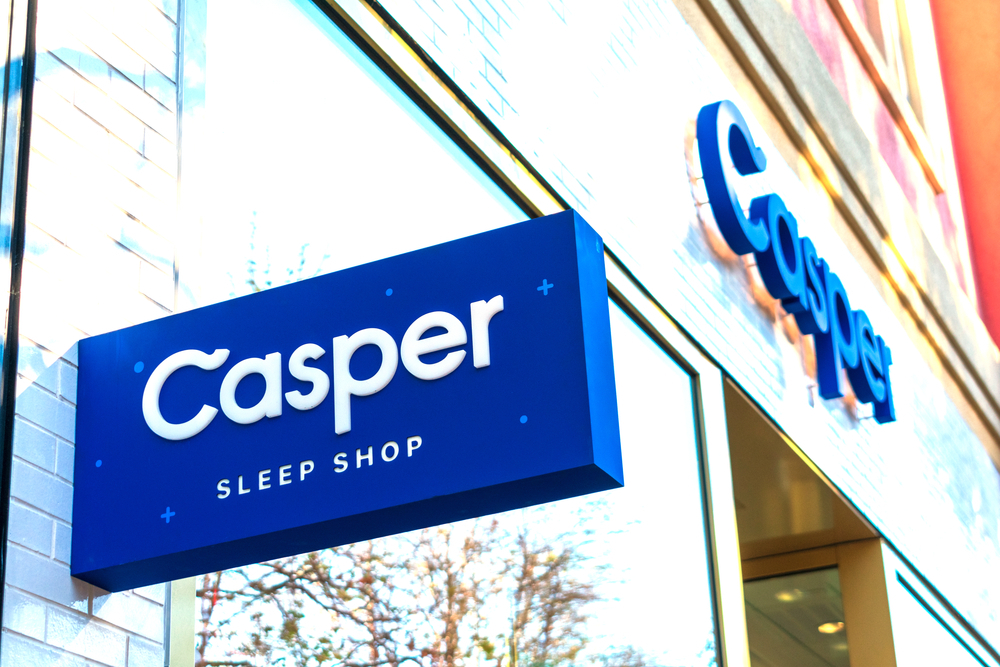Megibow is still in his first year as CEO of Casper, the once DNVB mattress darling. Megibow sits down with Multichannel Marketer to discuss rightsizing the business, its focus on customer service, the role of stores and profitability.
By 2025, mattress brand Casper will be profitable. And growing, said Casper CEO Joe Megibow.
Megibow — former CEO of competing mattress brand Purple — joined Casper in January 2024 to bring the digitally native brand to profitability.
“It’s time to run a great business,” Megibow said. “Not just a great brand with a great product.”
Casper debuted in 2014 as one of the first online bed-in-a-box brands. After years of rapid growth, Casper has had a tumultuous few years. It had its initial public offering in February 2020. Just two years later, private equity firm Durational Capital Management acquired Casper. And most recently in October 2024, Casper became a subsidiary of polyurethane foam Carpenter Co. Carpenter.
Despite the frequent changes in ownership, Casper’s product will continue to please customers and carry the brand to profitability, Megibow said.
“Casper is not just going to become a brand flag on generic product,” he said. “Casper is defined by our product. We can only sustain this brand if we continue to deliver the product that wins over our customers and that we’re not going to mess with.”
Casper cuts costs in pursuit of profitability
Megibow, Capser’s third CEO in as many years, came in at the start of the year with a 100-day plan to cut costs, focus on cashflow positivity and execute exclusively on strategies that could bring in a return within 100 days.
“I’m running a turnaround. This is a company that grew really fast with a lot of classic large scale VC investment,” he said. “Profitability was never the goal, and profitability alluded us for the majority of our life over 10 years.”
Now, profitability is the goal. To that end, Casper laid off an undisclosed number of employees to “right size the business,” and it’s now renegotiating a number of its long-term technology and real estate contracts.
“We signed a lot of long-term contracts in the days where money was no object,” he said.
Focusing on quick, profitable marketing campaigns
When it comes to marketing, Casper is focusing on campaigns that bring in fast returns, even if they are smaller, opposed to larger returns that take longer. For example, Casper approved performance marketing tactics like affiliate, social media and search engine marketing, while held off on shooting a new TV spot.
“Investing in something that might have an outsized return 18 months from now is not the right approach when we’re looking for stability today,” Megibow said.
One quick win Casper initiated was discounting one of its best-selling mattresses. It analyzed which product would bring in more dollars at a contribution market level if it could increase the sales velocity by lowering the price.
“We blew past the breakeven hurdles on some of these price changes,” he said. “It’s been really amazing to see if you get the right product at the right price point, how your customer will reward you for that.”
Why stores are ecommerce’s ‘dirty little secret’
Another top item on the list to bring Casper to profitability was to close stores in what Megibow dubs as “vanity locations.” Stores in a touristy, high-profile area, for example, may give the brand visibility but not aid in any sales.
“I understand why they were selected, but they’re not locations that are set up to really be profitable stores,” he said.
“The intent is [stores are] not marketing centers. We want them to be profitable, and our average store is,” he added.
Even if shoppers go into a Casper store and later buy online — which many shoppers do —the stores still heavily aid in driving conversion. Stores are and will continue to be a key part of Casper’s growth. Megibow said he expects Casper to double the number of physical locations from its current 62. Casper also sells its products 1,500 retail locations, including wholesale club Costco.
“The dirty little secret of ecommerce is one of the most efficient ways to grow online sales is offline stores,” he said.
Shoppers want to engage with the product and humans for guidance, Megibow said. While Casper and many direct-to-consumer brands do their best to make online shopping easy and feature-rich, the best presentation of Casper’s mattresses is in store, Megibow said.
Casper drives additional value from store associates by tapping them for customer service chats
Besides sales, one of the ways Casper can increase the value of a store is to have the store associates assist with online customer service requests.
Foot traffic to mattress stores can be slow. When associates are not assisting in-store shoppers, the brand has them respond to customer service chats “at almost no incremental cost,” Megibow said. Plus, store associates are among its most knowledge employees and already know how to answer product-specific questions.
Casper trains dozens of customer service employees to aid in guiding shoppers to the right product. Shoppers can chat with these specific agents by tapping the “Speak to a Sleep Specialist” button on its site.
Casper routes more than half of the product help chats to store associates, he said.
With a high ticket price of a mattress, customer service employees help drive higher average order values, higher customer satisfaction scores and lower return rates.
“[Casper] doesn’t view [call centers] as a cost center that we should try to find every possible reason to not call us. We want you to call us,” Megibow said at the recent Shoptalk Fall conference. “We have really, really knowledgeable sleep specialists who will happily talk to you about what you are looking for in your sleep, your budget and how can we direct you to a product that’s great for you.”
Casper’s profitable future hinges on satisfied customers
Casper was among the first online brands to disrupt the mattress category, but many followed including Leesa, Nectar, Helix and Purple. Mattresses have a high average order value and these online brands could afford to spend a few hundred dollars to acquire a customer, he said.
But customer acquisition costs in 2018 were much lower than what they are today and there’s more competition. What Casper does have going for it, Megibow said, is a quality product with satisfied customers.
“One in three mattresses we sell today are to prior Casper purchasers,” Megibow said. “That only happens if their relationship with the brand and our ability to deliver on the product promise worked. We are winning customers every day on the strength of our product.”




